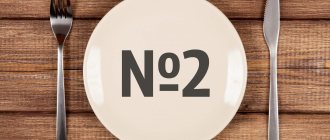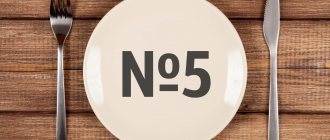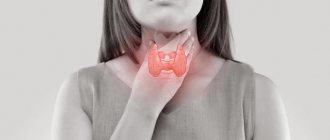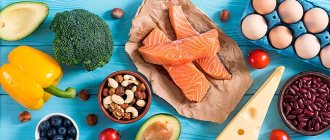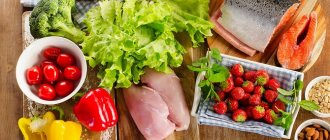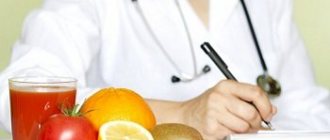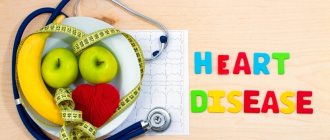The text is for informational purposes only. We strongly urge you not to use diets, resort to any therapeutic menus or fasting without medical supervision. We recommend reading: “Why you can’t go on a diet on your own.”
Pimples (skin rashes, acne, acne) are a cosmetic problem that is traditionally considered typical for teenagers, but skin rashes often bother adults. Most representatives of the fair sex, having noticed uninvited “guests,” often make the same traditional mistake: they cover up acne lesions with decorative cosmetics. This is only a momentary solution that will not remove the problem itself, but simply masks its manifestations. In order to choose the best method for getting rid of acne, you should contact a cosmetologist and reconsider your diet. The specialist will first ask you about what you eat when you come to see him.
A proper diet is one of the important components in the fight for healthy and beautiful skin. Only an integrated approach, combining external remedies and the right diet, can rid you of skin rashes once and for all. Any inflammatory processes, the appearance of acne or acne indicate that it’s time to choose a diet for acne.
The importance of proper nutrition when treating acne
Acne (acne) is a common skin disease caused by changes in the sebaceous glands, their ducts and hair follicles, which affects not only teenagers, but also adults. Most often, the problem is genetic and inherited, but even in this case, if you follow the recommendations of specialists, the intensity of the rash can be controlled by maintaining healthy skin.
Dermatologists and cosmetologists, in addition to individual instructions for the treatment of acne, recommend that patients adhere to a low-carbohydrate diet and pay attention to products that will help reduce the amount of sebum production and reduce its density, preventing the formation of new foci of inflammation. It is also worth paying attention to the list of products whose consumption is recommended to be reduced, as they have a negative effect on the condition of the skin.
Cereals
Cereals are essential for the health of our body, but they also need to be chosen and consumed correctly. Skip cereals and boiled, slimy porridges in favor of whole grain side-dish cereals with a high content of coarse fiber. Such food will be absorbed more slowly by the intestines and will prevent a sharp increase in blood sugar. Its saturation with nutrients will also occur gradually, which is much more beneficial both for the body itself and for the skin.
Emergency supply of vitamins. 10 healthy products for self-isolation Read more
What to eat to speed up the process of getting rid of acne
The acne diet focuses more on reducing your intake of carbohydrates and saturated fats and increasing your intake of nutrients, antioxidants and fiber - this diet improves the immune and digestive systems, and the skin becomes noticeably clearer and looks healthier. To help your body fight breakouts, it is recommended to include the following categories of foods in your diet:
Probiotics
In some cases, the occurrence of rashes may be associated with the state of the intestinal microflora. An imbalance of microflora contributes to the appearance of inflammatory processes in the body and, as a result, acne on the face, chest and back. Probiotics reduce the intensity of oxidative processes and resist inflammation. To maintain a normal digestive process, it is important that your diet includes foods such as pickled vegetables and dark chocolate.
Zinc-rich foods
Zinc reduces the appearance of acne and helps get rid of rashes faster, so it should be in your daily diet. Include chicken and beef liver, chicken hearts, boiled beef tongue, roast beef, pumpkin and watermelon seeds, pine nuts and pecans in your diet. The champion in the amount of zinc is oysters (however, remember that oysters are a strong allergen).
Fish and Omega-3
Most people have excess amounts of Omega-6 fatty acids in their daily diet. For all its benefits, Omega-6 promotes inflammatory processes in internal organs and tissues, therefore they are not recommended in large quantities against the background of acne. To reduce the severity of breakouts, balance your diet with Omega-3 fatty acids, which have an anti-inflammatory effect and prevent clogged pores. Omega-3 is found most in fatty sea fish, such as mackerel, as well as tuna, sardines, salmon and cod liver. From plant products - in flax seeds, broccoli and Brussels sprouts.
Vegetables, herbs and freshly squeezed juices
A vegetable diet cleanses the body of toxins and keeps the skin toned. People suffering from acne are advised to include more vegetables and herbs in their diet, which contain beta-carotene, a provitamin that promotes the natural regulation of skin oiliness and has an anti-inflammatory effect. A lot of beta-carotene is found in carrots, sea buckthorn, parsley and celery. For acne, it is also recommended to eat more dark-colored berries (raspberries, blueberries, black currants) - they contain many antioxidants that improve skin condition.
Green tea
This drink is a powerful antioxidant and effectively protects the body from the adverse effects of the external environment. Green tea can be drunk throughout the day - both hot and cold. It is especially useful to brew green tea varieties in a teapot - tea pre-packaged in bags loses most of its beneficial properties.
Sweets
Excessive consumption of sweets leads to protein glycation. Our skin contains a large amount of collagen and elastin, which, when glycated, change their structure and become unrecognizable to the immune system. It does not recognize old collagen and elastin molecules and does not destroy them, and therefore no new collagen and elastin are produced. This accelerates skin aging, reduces tone, and age-related changes accumulate quite quickly. Therefore, those with a sweet tooth need to be mentally prepared for earlier wrinkles.
Ban on buns and coffee. What not to eat for breakfast Read more
What not to eat if you have problem skin and acne
Diet during acne treatment involves avoiding foods that enhance the functioning of the sebaceous and sweat glands.
- The first category of foods that can cause new rashes on the face includes foods with a high Glycemic Index (GI). Simply put, these are “fast” carbohydrates that rapidly increase blood glucose levels (confectionery and sweet products, soda, etc.). Glucose increases the production of insulin, which, in turn, stimulates the production of the hormone testosterone - one of the culprits of acne - and increases skin sensitivity to it. The GI of foods depends on several factors: the amount of fast carbohydrates and fiber. The less sugar and more fiber you consume, the better.
- The second category of undesirable products includes dairy and fermented milk products: milk, kefir, yogurt, fermented baked milk, cottage cheese, cheese, etc. Cattle growth hormones (anabolics) in these products disrupt the human hormonal balance, which also causes rashes.
- The third group includes products containing trans fats (highly comedogenic fatty acids), for example, fast food and processed foods. Consumption of such products can change the composition and properties of sebum, making it denser.
Let's highlight a group of drinks separately. For example, when drinking coffee, the body produces the stress hormone cortisol, which also causes acne. Alcohol, carbonated drinks and concentrated juices not only increase blood sugar levels, but also the amount of waste and toxins in the body, which also come out through the pores on the face with sebum and sweat. But if you follow the drinking regime and have sufficient daily water intake, your skin will only thank you.
"Black list" of products
Some foods present in our diet should be excluded if any skin problems occur. If you are not able to completely give them up, then at least reduce your consumption of all of the following to a minimum.
So, the “black list”:
- Any smoked meats, even home-cooked ones, fast food, semi-finished products.
- Seasonings. Those who like to treat themselves to spicy foods can add garlic to their dishes - it has an anti-inflammatory effect and helps cleanse the blood. The taste of the salad will help to reveal the ginger root, which has the same properties.
- Fatty meats and fish must be replaced with lean ones.
- Strong black tea, coffee.
- Baking, white bread.
- Sweets: sugar, confectionery, chocolate. Very sweet fruits are also prohibited: bananas, figs, grapes. For those who are unable to completely give up their favorite “snacks,” nutritionists recommend replacing sugar with honey.
- Products high in iodine: seaweed, iodized salt.
It is believed that excess of this substance in the diet can trigger acne.
Diet for acne-free skin: sample menu
A diet based on proper balanced nutrition is one of the effective ways to combat rashes, aimed at internally improving the condition of the skin. After just a month of regular proper nutrition, you will notice improvements. You can diversify your diet by adding healthy snacks: fresh vegetables, fruits, nuts, seeds.
Let's give an example of how a dietary menu for acne can be created:
Breakfast
- Cereal porridge in water with the addition of dried fruits.
- Muesli with berries and seeds.
- Wholemeal rye/bran bread with unsalted salmon and avocado.
- Bran with nuts and fresh fruits.
- Avocado with boiled egg and bran.
Dinner
- Fish: mackerel, salmon, sardines, etc. must appear in the diet a couple of times a week.
- Meat: stewed or steamed beef, boiled or baked white meat (chicken, turkey), you can prepare chicken broth with vegetables.
- Suitable side dishes include steamed or grilled vegetables, brown rice and other grains, and boiled potatoes.
- Salads made from fresh vegetables, herbs with the addition of cereals and seeds (chia, pumpkin, etc.) will enrich the diet with antioxidants, vitamins, fatty acids, and improve the color and condition of the skin.
Dinner
- Steam cutlets made from beef liver and minced fish/chicken.
- Roasted turkey with rice and vegetables.
- Vegetable stew with beef stew.
- Pilaf with chickpeas, carrots and chicken.
Replace usual sweets with dried fruits, natural marshmallows, and a slice of dark chocolate with at least 70% cocoa content. You can sweeten dishes or drinks by adding fructose or stevia.
Vitamins
Today it has become very fashionable to take “vitamins” for any occasion. At the same time, humanity has never eaten as abundantly as it does now. And there had never been such counters overflowing with food before. But, nevertheless, humanity somehow survived and did not die from a lack of vitamins. In rare cases, people found themselves isolated. Modern people cannot have true vitamin deficiency. Except in cases where a person has diseases that prevent the absorption of certain vitamins in the intestines. However, these are special cases that require separate consideration and elaboration. Therefore, under no circumstances should you prescribe vitamins to yourself just in case, on the principle “it won’t be superfluous.” This will not be superfluous only for those companies that produce vitamins and sell them, but for the body it can cause allergic reactions, including skin reactions, as well as other serious diseases. Therefore, the main advice is this: try to keep your diet balanced, including more vegetables and fruits, white meat, fish, eggs, and whole grain cereals. Then the body will receive everything it needs to feel good. And if the body feels good, then so does our skin.
Reviews and results
A therapeutic diet for acne, according to most patients, makes a significant contribution to the condition of the skin. In principle, this diet is based on the principles of healthy eating and can be prescribed for a long period. True, some patients are bothered by a sharp restriction in the diet of simple carbohydrates.
- “...I have always had problem skin. Acne appeared at the age of 13, but after a few years everything returned to normal. The problem arose again at almost 32 years old. I tried various means, the effect was minimal. I had to consult a dermatologist, who prescribed me systematic treatment, ranging from medications to skin care tips and special cosmetics. Of course, I had to go on a strict diet. At first I suffered greatly from the lack of “sweets,” but gradually I got used to dried fruits and various nuts and now I hardly feel any discomfort. In principle, this is a healthy diet. In addition, after switching to such a diet, I managed to lose almost 5 kg. Now the skin condition has returned to normal, and there are practically no rashes, but I still stick to the diet, since I will have to start the treatment again”;
- “... As my experience shows, proper nutrition and skin condition are closely interrelated. As soon as I start to get carried away with sweets, especially during the holidays, my skin immediately suffers. I immediately go on a diet, give up sweets, unhealthy foods, fatty meats, and after 2-3 weeks my skin condition improves.”

